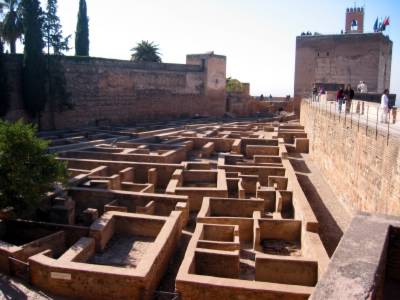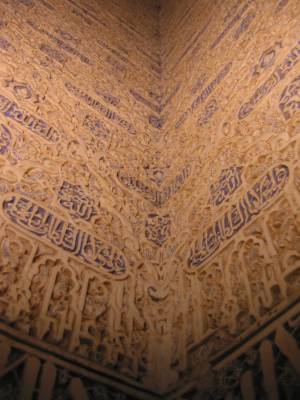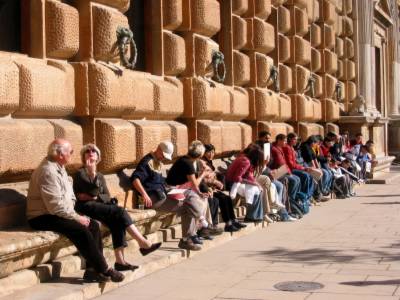If you have died without seeing the Alhambra, you have not lived.
如果生前没有看过阿罕布拉宫,就算白活了!

Alcazaba, the Alhambra's fortress, dating from the 11th to the 13th centuries.

The view of Granada, from the Torre de la Vela (watchtower) of the Alcazaba.

The view of Granada, from the Torre de la Vela (watchtower) of the Alcazaba.

Flags on the Alcazaba, Granada.

The Alcazar, the royal palace built for the Moorish rulers Yusuf I (1333-1354) and Muhammed V (1354-1391).

Patio de los Leones (Courtyard of the Lions), the grandest display of Nazarite art in the place, where a rhythmic arcade of marble columns borders the courtyard, and a fountain supported by 12 marble lions bables in the middle.

Inscriptures on the wall of the Alcazar.

Inscriptures on the wall of the Alcazar, la Alhambra, Granada.

View from El Generalife, the sultan's summer palace.

Palacio de Carlos V. Emperor Carlos V built this Renaissance masterpiece by Pedro Machuca (a desciple of Michelangelo). Although it is incongruous with the surrounding Moorish splendor, scholars concede that the palace is one of the most beautiful Renaissance buildings in Spain. A square building with a circular inner courtyard wrapped in two stories of Doric colonnades, it is Machuca's only surviving design.

Palacio de Carlos V, Alhambra, Granada, Spain.

Tourists outside of Palacio de Carlos V, Alhambra.

No comments:
Post a Comment